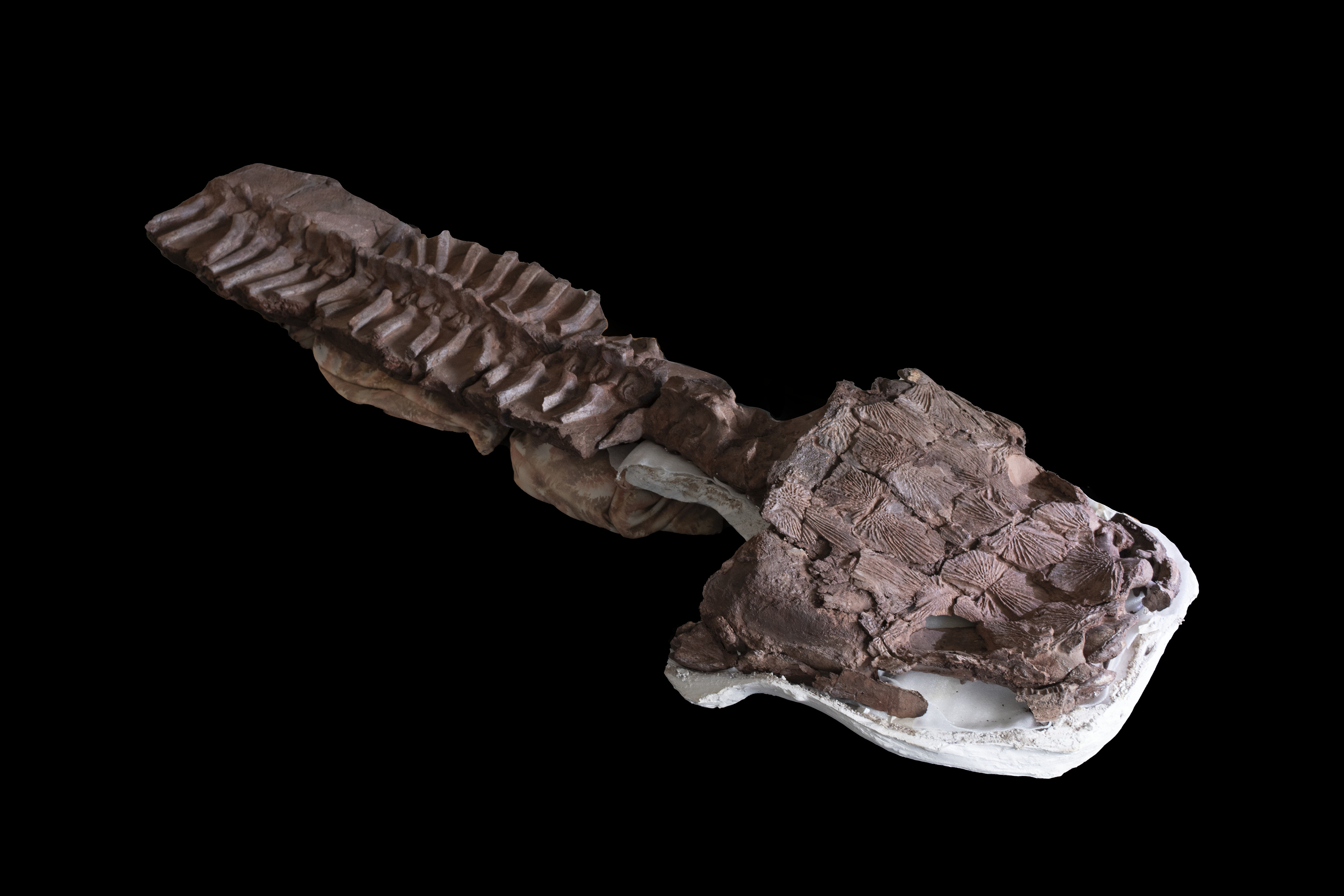If you go down to the ancient swamp today you’ll be sure of a big surprise. Which is exactly what happened to researchers in Namibia who have discovered a giant salamander-like ancient beastie with huge fanged teeth and a head that was over half a meter long.
Found in the Gai-as Formation in the Ugab River valley in Damaraland Namibia, researchers discovered a brand new species they’ve named Gaiasia jennyae, after both the formation and a palaeontologist named Jenny Clack who specialized in these early tetrapods. This discovery of the fossil was something of a surprise to the team.
“When we found this enormous specimen just lying on the outcrop as a giant concretion, it was really shocking. I knew just from seeing it that it was something completely different. We were all very excited,” said Claudia Marsicano, co-lead author of the study, in a statement.
The team actually discovered four total specimens including a particularly well-preserved skull and spine. This allowed the team to think more about the ecology of this species as well as what the area was like when Gaiasia jennyae was alive. The large interlocking teeth suggest that G. jennyae was a large ambush predator that would have consumed fish within the lake.
“Gaiasia jennyae was considerably larger than a person, and it probably hung out near the bottom of swamps and lakes. It’s got a big, flat, toilet seat-shaped head, which allows it to open its mouth and suck in prey. It has these huge fangs, the whole front of the mouth is just giant teeth,” said Jason Pardo, an NSF postdoctoral fellow at the Field Museum in Chicago and the co-lead author of the study.
Multiple specimens also allowed the team to compare Gaiasia jennyae to other known species from this age. This helped them discover that G. jennyae is around 280 million years old, and so hails from the lost supercontinent Gondwana. The skull is the most impressive part of the fossil with large interlocking teeth that curved backwards on both the lower and upper jaws. The top of the skulls even possess unusual patterns.

The fossil is thought to be around 280 million years old.
Image Credit: C. Marsicano
“After examining the skull, the structure of the front of the skull caught my attention. It was the only clearly visible part at that time, and it showed very unusually interlocking large fangs, creating a unique bite for early tetrapods,” continued Marsicano.
Gaiasia jennyae is so old that the team think the specimen is a stem tetrapod, one of the earlier vertebrate ancestors before the crown groups of mammals, birds, and reptiles became truly established. Stem tetrapods possessed four legs, and were among the earliest ancestors of modern-day species.
“Gaiasia is a stem tetrapod – it’s a holdover from that earlier group, before they evolved and split into the groups that would become mammals and birds and reptiles and amphibians, which are called crown tetrapods,” said Pardo. “It’s really, really surprising that Gaiasia is so archaic. It was related to organisms that went extinct probably 40 million years prior”.
They also believe that the specimen was big enough to be the primary predator of the ecosystem in which it lived.
Namibia today looks very different from the Namibia of 300 million years ago. The area would have been much further south, even with the northernmost point of Antarctica. The land would have been swampy closer to the poles with ice and glaciers, although nearer the equator forests were starting to appear as the Earth neared the end of an ice age.
“The fact that we found Gaiasia in the far south tells us that there was a flourishing ecosystem that could support these very large predators. The more we look, we might find more answers about these major animal groups that we care about, like the ancestors of mammals and modern reptiles,” finished Pardo.
The paper is published in Nature.
Source Link: Giant Ancient Swamp Creature From Lost Supercontinent Of Gondwana Discovered